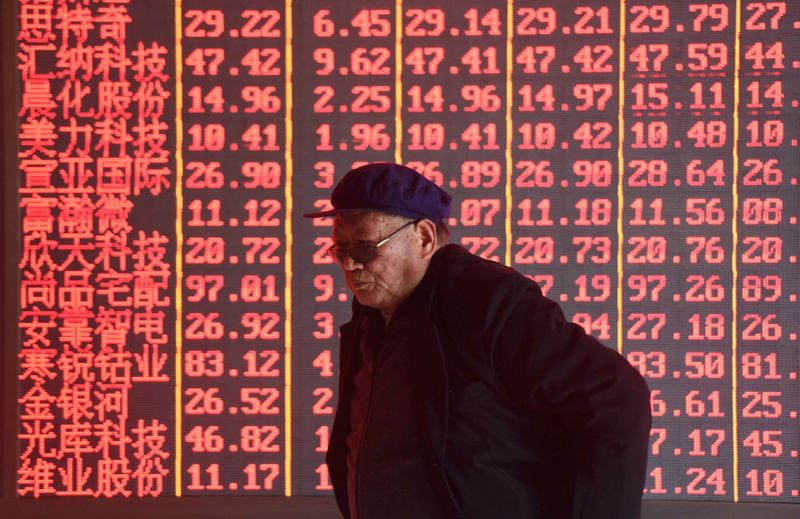(Reuters) – The relative price valuations of Asian equities compared with their global peers are at a near 14-month low, data showed, after their lacklustre performance due to worries over slowing growth and the spread of the Delta-variant of coronavirus this year.
According to Refinitiv data, the MSCI Asia-Pacific index’s forward 12-month P/E ratio stood at 14.9 compared with the MSCI World’s P/E ratio of 18.46. That near 20% valuation discount is the highest in 14-months, the data showed.
MSCI Asia-Pacific and World index’s PE
To view the graphic, click here: https://fingfx.thomsonreuters.com/gfx/mkt/znpneewjdvl/MSCI%20Asia-Pacific%20and%20World%20index’s%20PE.jpg
MSCI Asia-Pacific index’s estimates change
To view the graphic, click here: https://fingfx.thomsonreuters.com/gfx/mkt/myvmnnermpr/MSCI%20Asia-Pacific%20index’s%20estimates%20change.jpg
The MSCI Asia-Pacific index is up just 3.37% this year, compared with the MSCI United States’ gain of 19.7% and MSCI Europe’s 12.9% this year.
The Asia-Pacific index has, however, gained 4.4% in the past two weeks, on rising hopes that the U.S. Federal Reserve is likely to delay the start of tapering its asset purchases and maintain its expansive monetary policy for the near-term.
“U.S. equities had an incredible run so far leading to almost 35% premium over Asian equities, higher than the average discount over the past 20 years,” said Sean Taylor, chief investment officer for APAC at DWS.
“We could see a reverse in trends next year with the rest of world moving towards tighter monetary policy driven by strong recovery and inflationary pressure while China increases fiscal spending with more liquidity provision.”
Some analysts said Asian stocks are attractive at these levels and could stage a turnaround due to the recent pick up in vaccinations and a rise in domestic consumption levels in the region.
“Asian equities are under-owned by institutional investors. Within EM, investors are underweight EM Asia and overweight Latin American equities,” said Manishi Raychaudhuri, Asia-Pacific equity strategist at BNP Paribas.
“Given Asia’s stronger growth outlook, listed presence of tech and consumer megatrends and lower balance sheet risk, such a stance in favour of Latin America is surprising to us,” he said.”
China, Hong Kong and South Korea have the lowest P/E ratios the data showed.
Valuation of Asia-Pacific equities
To view the graphic, click here: https://fingfx.thomsonreuters.com/gfx/mkt/gdvzyyxnypw/Valuation%20of%20Asia-Pacific%20equities.jpg
Sectorwise, financials and real estate are the cheapest in the region.
Meanwhile, Asian firms continued to receive earnings upgrades in August, data showed, which highlighted sustained hopes of an earnings recovery in the region.
Breakdown by country for estimates changes in last 30 days
To view the graphic, click here: https://fingfx.thomsonreuters.com/gfx/mkt/gkvlggoegpb/Breakdown%20by%20country%20for%20estimates%20changes%20in%20last%2030%20days.jpg
Breakdown by sector for estimates changes in last 30 days
To view the graphic, click here: https://fingfx.thomsonreuters.com/gfx/mkt/movanngrkpa/Breakdown%20by%20sector%20for%20estimates%20changes%20in%20last%2030%20days.jpg
(Reporting by Gaurav Dogra and Patturaja Murugaboopathy in Bengaluru; Editing by Kim Coghill)



















